Tools for Teaching
Emotional Regulation (Part 2)
Learning to regulate emotions is a valuable skill that helps children replace impulsive reactions with healthier responses, supporting their mental well-being.
The following are some effective tools for teaching emotional regulation.
1. Zones of Regulation
- Red Zone: State of very high energy and intense emotions like anger, rage, devastation, or terror.
- Yellow Zone: Higher energy and elevated emotions such as stress, frustration, anxiety, excitement, or nervousness. The child has more control here than in the red zone.
- Blue Zone: Low states of alertness and energy, including feelings of sadness, tiredness, sickness, or boredom.
- Green Zone: A calm, alert state where optimal learning occurs, associated with feelings of happiness, focus, contentment, and readiness to learn.
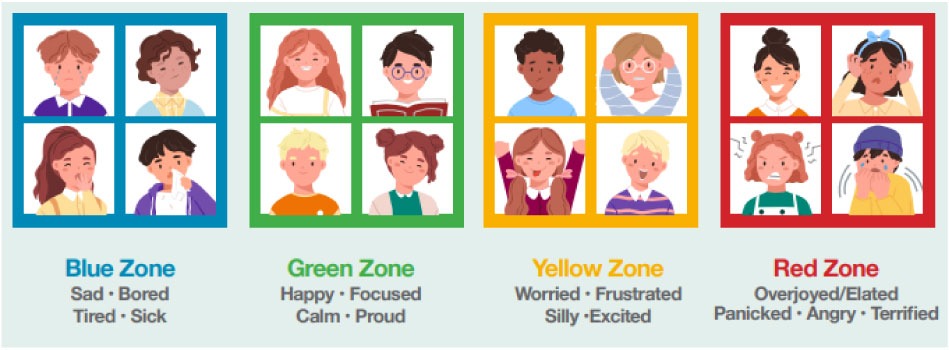
Visual Supports for the Zones
Visual aids make learning the Zones easier and more fun. Try using them during daily routines and in everyday situations to help your child understand and practice.
A traffic light analogy is a fun way to visualise the Zones.
- Green Zone: Just like a green light, it means “good to go.”
- Yellow Zone: Like a yellow light, it means “slow down and be careful.”
- Red Zone: Like a red light, it means “stop.”
- Blue Zone: Like a rest area sign, it means “time to take a break.”
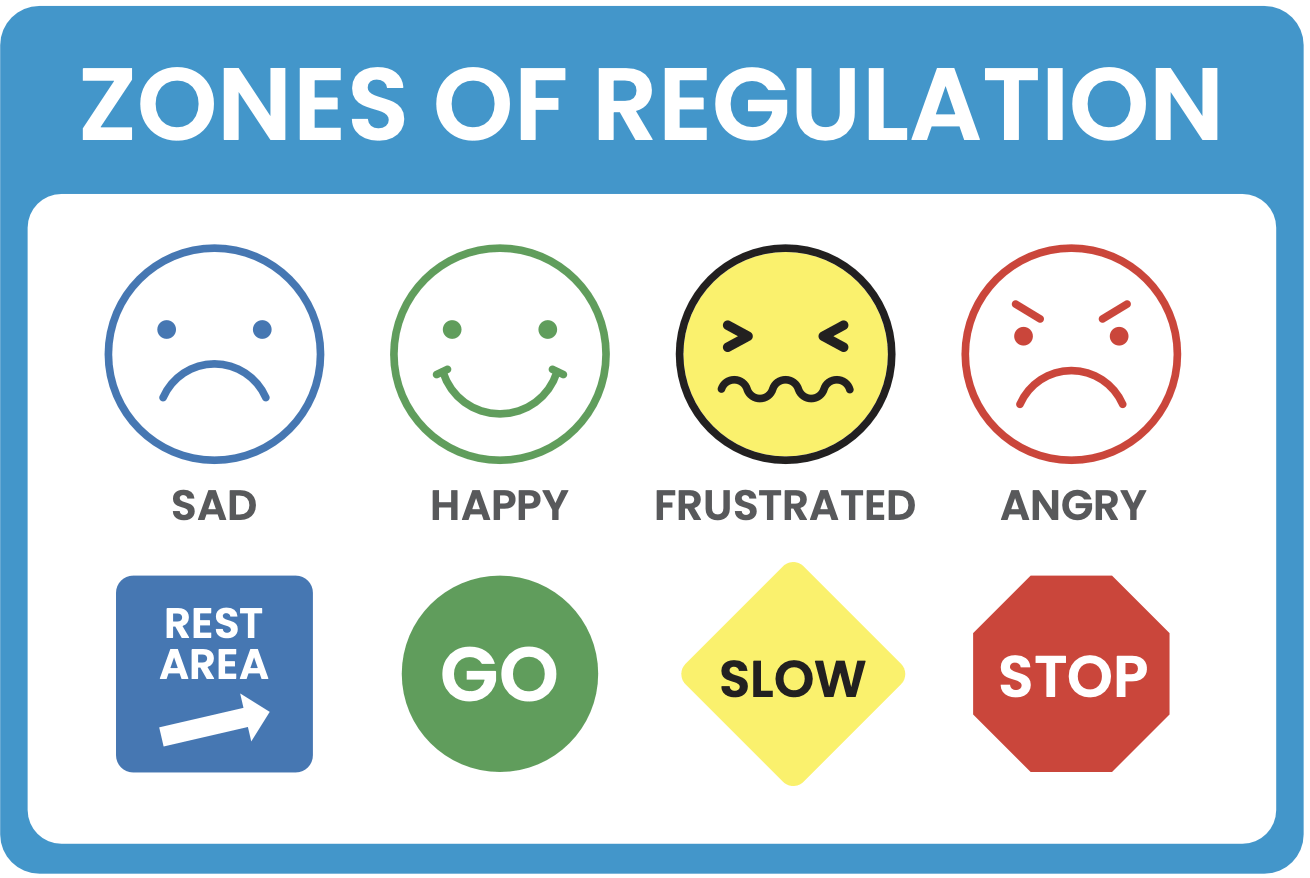
Another engaging way to explain the Zones is by creating a “feelings volcano,” where each layer represents a different zone, starting with blue at the base and red at the top, to show how emotions can build up.
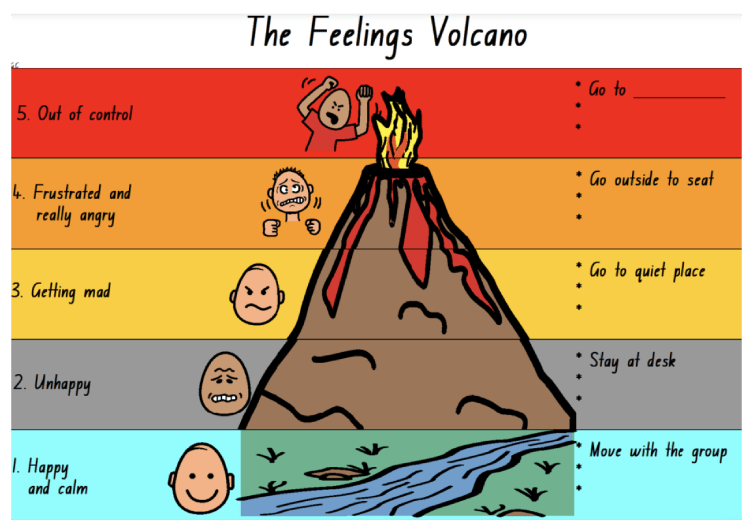
For example, if they’re in the red zone and feeling really angry, they could take deep breaths and count to ten to help calm down.
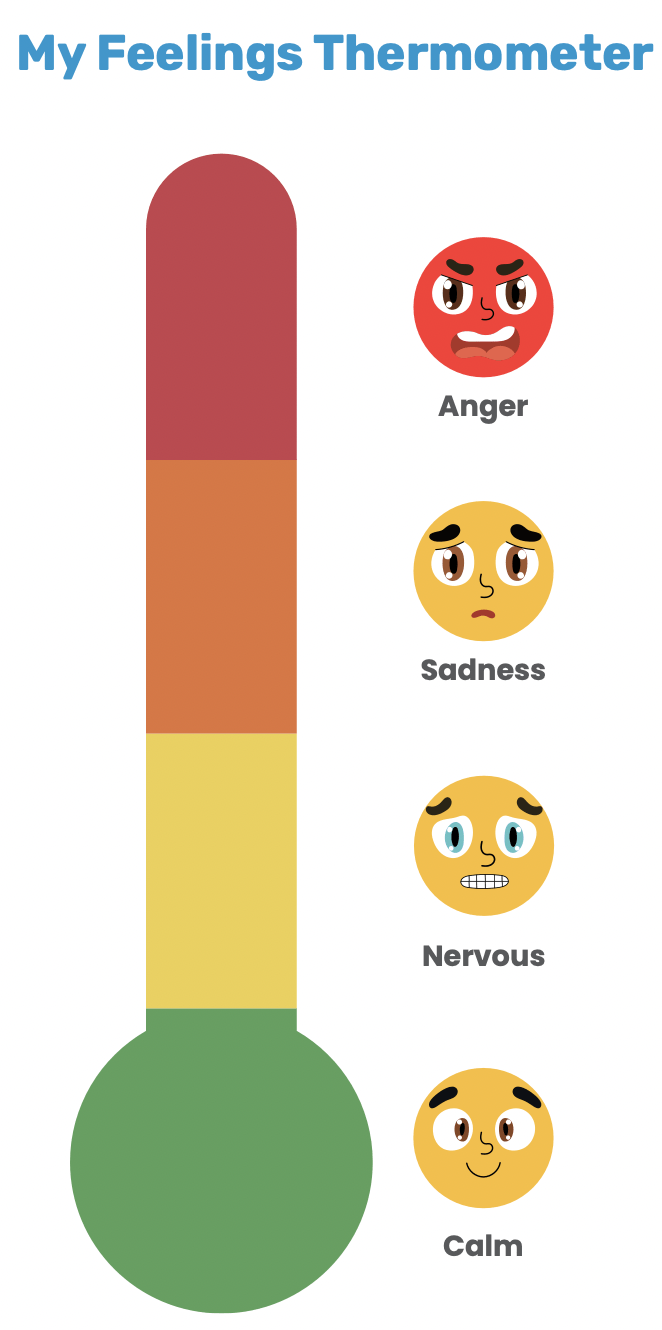
A Note About Talking About Emotions
Normalise all emotions by talking about them openly. For example, if your child seems anxious, you could say, “It looks like you’re in the yellow zone. Would you like to try one of your activities?” You can also model this by saying, “Mum’s feeling a bit tired today; I’m in the blue zone,” and talking about how you might feel better.

Zones of Regulations and Autism: Animated Social Stories for Children with Autism
2. The Incredible 5-Point Scale
Here’s how to use a 5-Point Scale with a child:
1. Choose the target behaviour: Pick a behaviour or feeling to focus on, like anxiety or a behaviour that needs improvement.
2. Define each scale point: Decide what each of the 5 points on the scale will represent, showing the levels or intensity of the behaviour.
3. Create a story or visual: Develop a simple story or visual cue that explains how the scale works, tailored to the child’s interests and understanding.
4. Introduce the scale: Teach the child how to recognise and identify each stage on the scale.
5. Practice using the scale: Help the child practice using the scale and make changes if needed. Peers and adults like parents or teachers can support the child by using the scale in different situations.
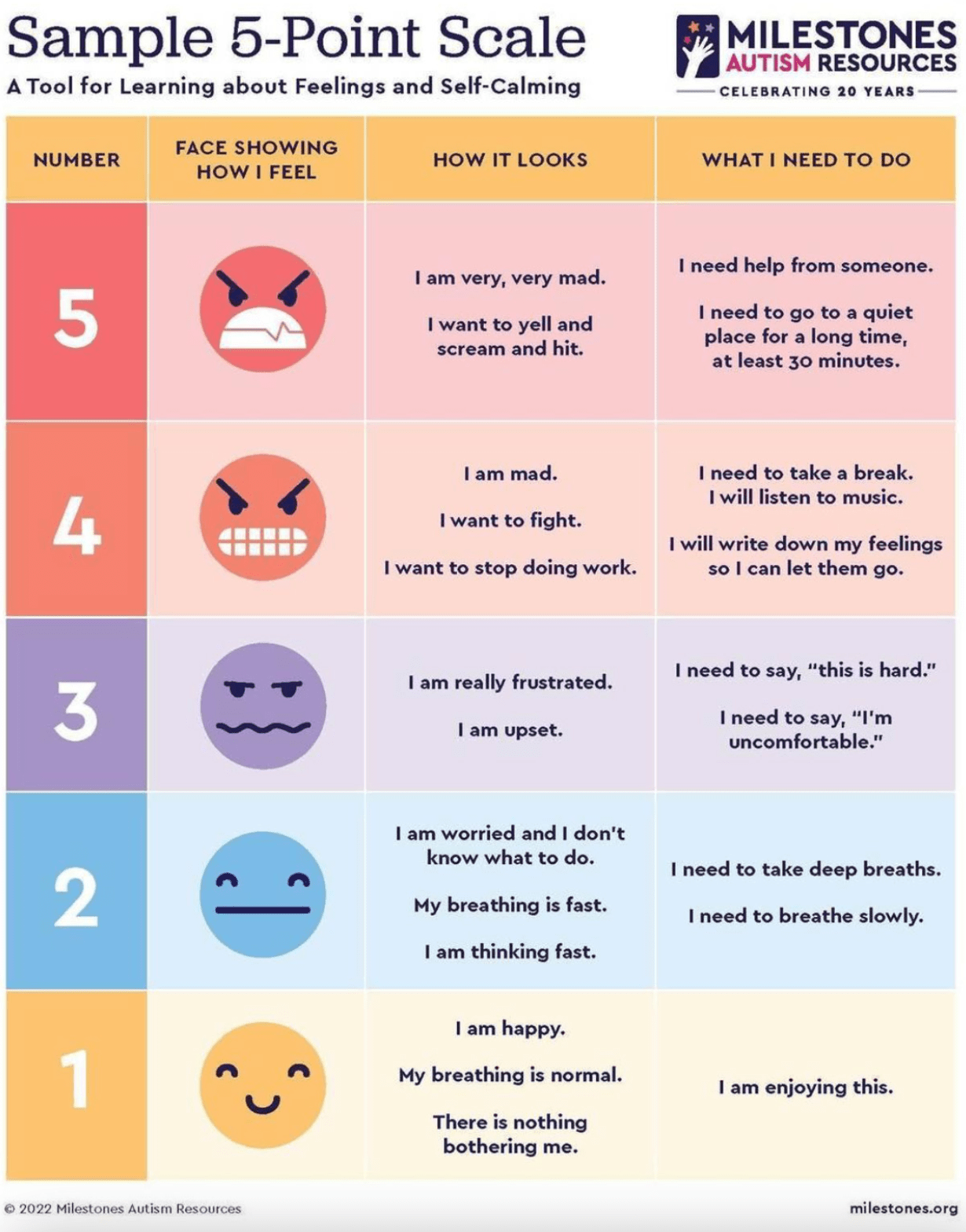
Image Credit: Sample-5-Point Scale – Milestones Autism Resources
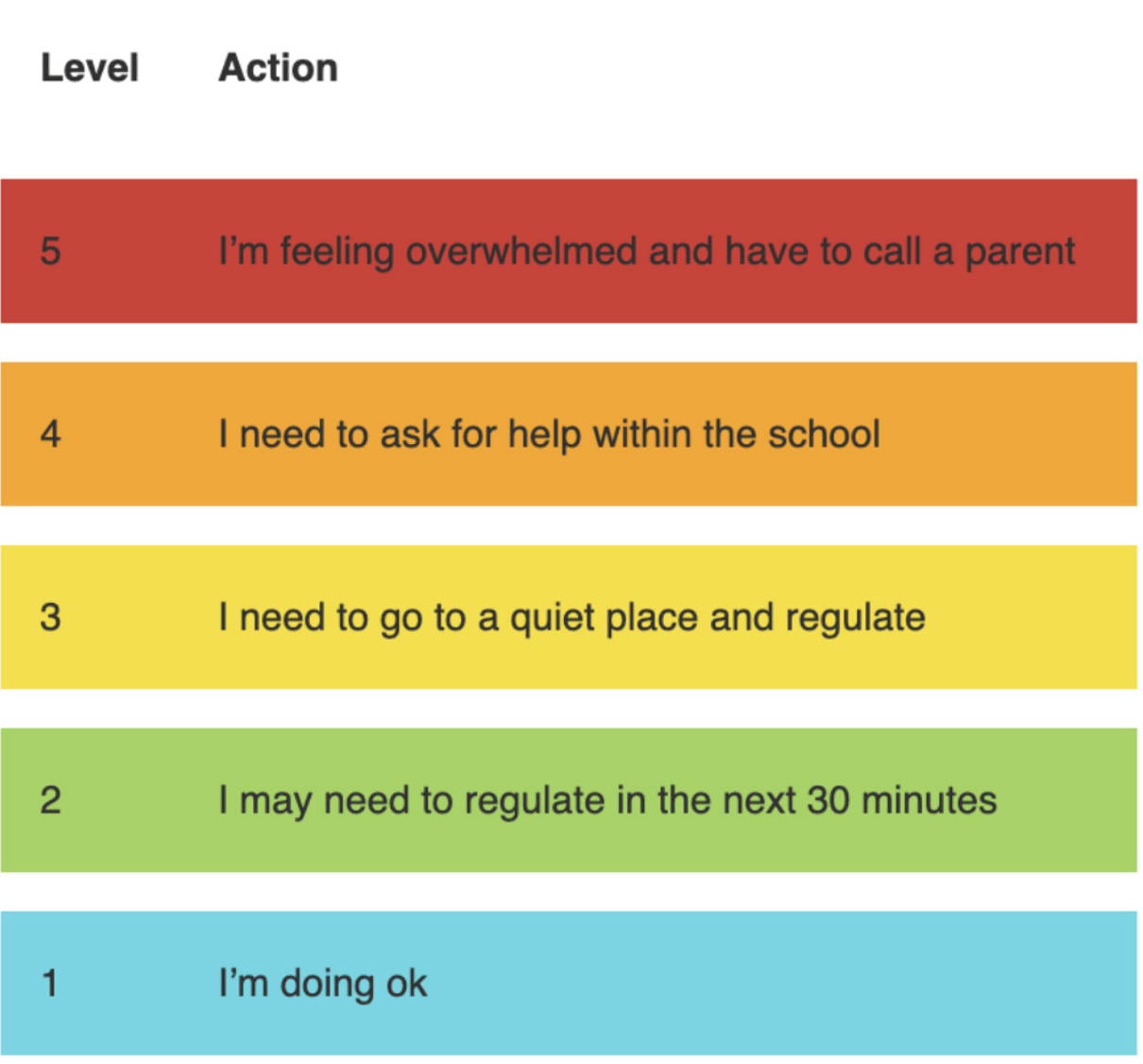
3. The Emotional Toolbox
The Emotional Toolbox, created by Tony Attwood, is a set of strategies to help people, especially those with autism, manage difficult emotions like anxiety, anger, and sadness. It includes different tools to help reduce these feelings and understand how thoughts can affect emotions. The toolbox gives people simple ways to handle tough situations more effectively.
Some of the tools are described below:
- Physical tools are activities that help quickly release emotional energy through movement or exercise. (e.g. playing sports, dancing, playing in the park, watching a funny show to laugh)
- Relaxation tools help you slowly release emotional energy, calm down, and lower your heart rate. (e.g. quiet time, drawing or painting, using fidget items, mindfulness)
- Social tools help you feel better by connecting with a friend, family member, or pet.(e.g. talking to someone you trust, volunteering to help someone, spending time with a pet)
- Thinking tools help you use your problem-solving skills to change your negative thought patterns and control your emotions. (e.g. refer to strategies on the 5-point scale, emotional thermometer, etc, imagine a calm, happy place, positive self-talk)
- Special interest tools involve doing activities you love that bring joy, relaxation, and help you switch off from stress.
- Medication tools: Emotional dysregulation can sometimes stem from an underlying medical condition, such as pain or discomfort, which requires medical attention. In some cases, medication might also be used as part of a plan to help manage these challenges, especially if other ways haven’t worked.
- Other tools that can reduce anxiety or negative emotions but do not necessarily belong to a specific category. (e.g. develop self-advocacy skills, setting boundaries) Inappropriate tools, like self-harm, violence, or aggression, can be harmful to yourself and others. It’s important to identify and replace them with healthier alternatives. Emotional tools should be developed from a young age and regularly reviewed to add helpful tools and remove those that are no longer useful or could be harmful.
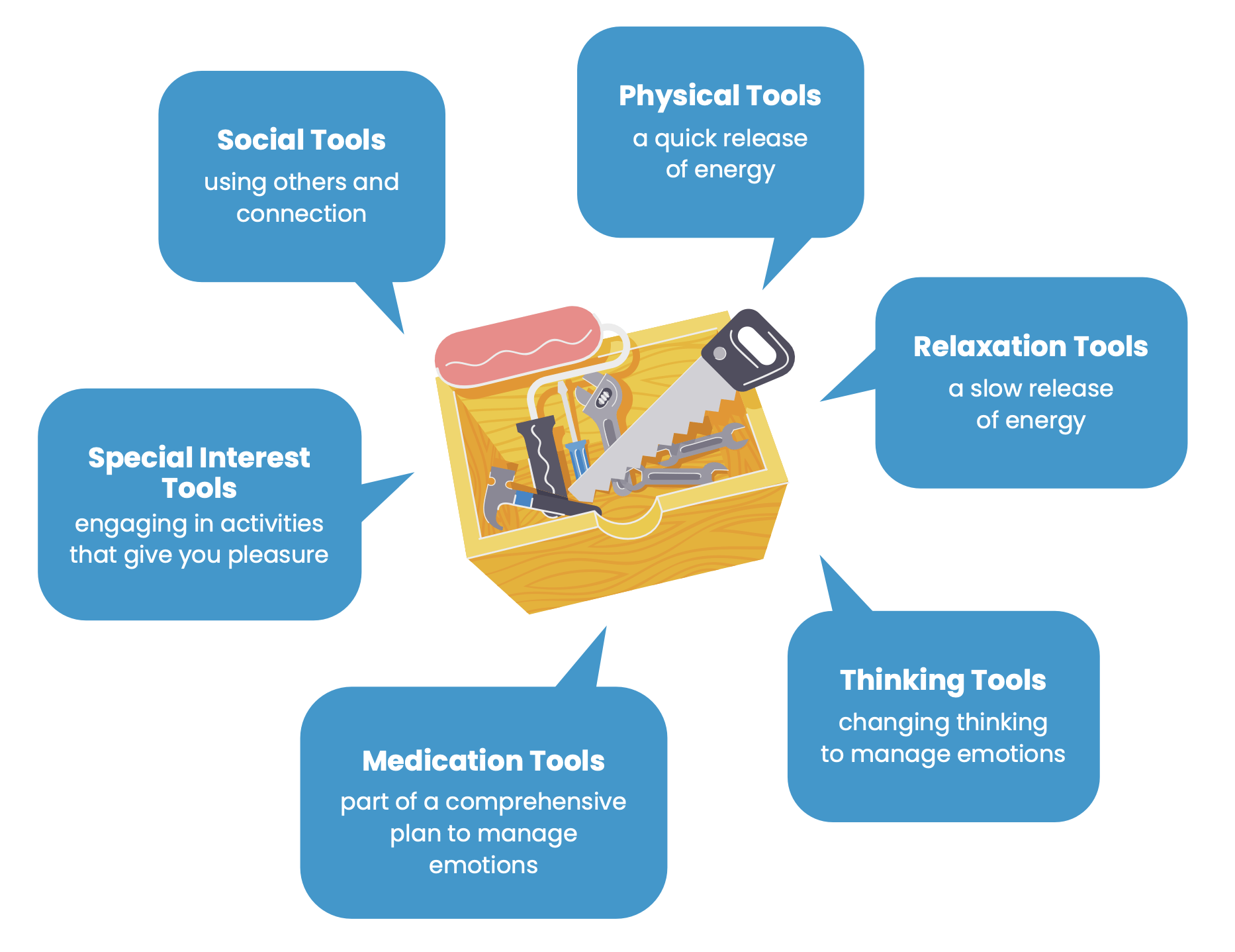
Calming Down Steps
1. Keep the child and others safe: Figure out what is causing the problem. Then, move the child away from whatever is upsetting them or take them to a different, calmer place.
2. Notice and identify the emotion: Pay attention to your child’s behaviour to understand their feelings before responding. Stay calm, listen, and try to see the situation from their perspective.
3. Name and connect the emotion to the event: Label the emotion and link it to what happened. This helps your child understand their feelings and shows you recognize how they feel.
4. Pause and say nothing: Give your child a moment to process what you’ve said. This pause can help them calm down or even start solving the problem themselves.
5. Support your child while they calm down: If your child needs more time, ensure everyone’s safety and stay close, offering calm support. Give them space if needed but let them know you’re there.
6. Address the behaviour or problem-solve: Once your child is calm, help them solve the problem or discuss their behaviour. Offer comfort if needed and acknowledge their emotions, while reinforcing acceptable behaviour.
Read our three-part article on managing meltdowns in autistic children:
Conclusion
This list is just a starting point—there are many techniques and strategies to help with calming and emotional regulation. What matters most is finding what works best for you and your child. Teaching emotional regulation to an autistic child isn’t a one-size-fits-all process. It involves teamwork, with parents, carers, and support persons coming together to help the child thrive. Working closely with your child’s teachers and therapists is also crucial for providing consistent support at home and in school. If your child needs more support, a counsellor or child psychologist can offer additional strategies.
It can be frustrating at times, but don’t give up. Every child is unique, so be open to trying different approaches and give things time to work. And remember, taking care of yourself is important too—your efforts make a difference.
Reference
Kari Dunn Buron The 5 Point Scale and Emotional Regulation
Autism Ontario The Emotional Toolbox
Raising Children Network Helping children calm down: 3-8 years
Raising Children Network Helping pre-teens and teenagers calm down
Resources and Further Reading
Goally Free printables and more on emotional regulation
he’s extraordinary An Overview of The Zones of Regulation: Curriculum and Learning Outcomes
Kari Dunn Buron The Incredible 5-Point Scale (Resources)
Milestones Autism Resources (2022) The 5-Point Scale: A Tool to Learn Emotions and Calming Strategies
Online Psychology@Peperdine (2018) How to Improve Emotional Self-Regulation Among Children with Autism and Attention Disorders
Reframing Autism Emotional Regulation, Part One: What is it and Why is it so Hard?
Reframing Autism Emotional Regulation, Part Two: Using Co-regulation to Teach Emotional Regulation

